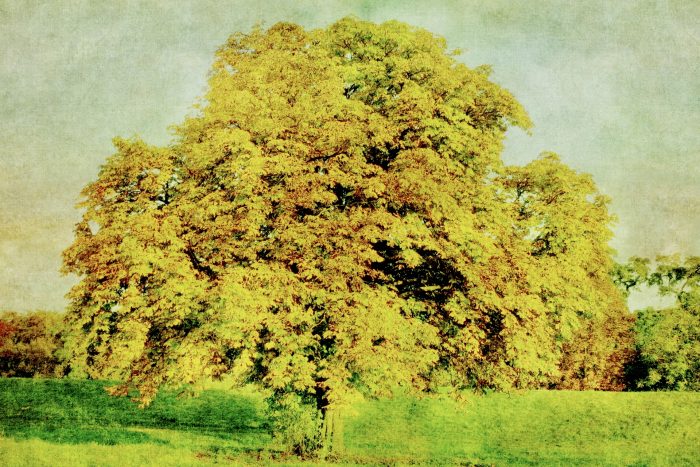The Writing Cure
…it was the season of Light, it was the season of Darkness, it was the spring of Hope, it was the winter of Despair…
– Charles Dickens –
1
For the first time in all these months, I feel like putting an end to my life. Not that I haven’t thought of it before; it’s just that, now, it’s becoming more of a reality. I would rather kill myself than be unable to love.
If R. is right—that all my self-analysis and introspection has been merely a cryptic apology for how I was before the onset—then I can only look forward to being that same person… forever.
Two days ago, I thought I had broken through to a new understanding. I felt energised and ready to keep growing. However, when I talked with R. last night, and she suggested that I hadn’t changed at all, my new-found insight crumbled.
I woke this morning to depression again, and more dreams about A. I am feeling increasingly confused and wondering if, once more, I am about to return to the maelstrom.
5 December 1990
In June 1990, on the eve of my thirty-ninth birthday, I started a journey into the depths of my psyche which would preoccupy me, at varying levels of intensity, for almost a decade. In fact, in many ways—sometimes great, sometimes small—the journey still continues.
Had I continued my initial brief recourse to conventional psychiatry, I may have been summarily diagnosed as suffering from severe clinical depression. But I resisted being categorised and—most importantly—I had no wish to submit myself to a regimen of drugs which I was certain would seriously compromise my ability to fully experience what I knew would be a crucial psychological process.
Despite my rapid descent into what I still sometimes refer to as ‘madness’, I had retained sufficient objectivity to know that I—and only I—could ultimately make sense of the process; and that I must do so with my eyes wide open.
What had befallen me was neither a curse nor a pathology. I had been graced with a gift which—for all the trials and tribulations it would bring my way— would set me on the road to becoming an integrated human being.
I was also fortunate that, over the preceding years, I had become familiar with Carl Jung’s therapeutic discipline of analytical psychology and had read, omnivorously, a number of his own works and those of his inheritors.
I was aware that the foundation of Jung’s theories had been laid in that intensive, two year period of his own psychological crisis, in the years 1913 to 1915, following his split with Sigmund Freud. During that time he had retreated to his home in Bollingen and embarked upon a period of intense introspection.
I now found myself immersed in a similar psychic conflagration where awake or asleep, I had no alternative but to confront the insidious forces lurking in my unconscious mind. It would have been folly to resist them for I needed to know them through and through; and yet I could not let them gain the upper hand.
It was the best of times and the worst of times. The worst, because my grip on everyday reality was sometimes so tenuous, I often doubted I would survive. And the best, because without the self-analysis I embarked upon, I would not be the person I am today.
My days were filled with delusions overwhelming in their intensity: multiple psychotic episodes interlaced with auditory and visual hallucinations. I was thrust into an alternate reality filled with synchronicities and secret communications intended just for me.
Simultaneously, I undertook the most dangerous yet necessary task of all: the removal of my anima projections from all the women in my world, past and present, with whom I would have otherwise had no tangible connection.
For, as the Jungian analyst, Edward Whitmont, rightly indicates…
As long as the anima remains in an unconscious state…her means of expression are compulsively primitive—through complexes, identity inflation and projection. (194) …This will colour not only [a man’s] relationships with particular women but also his emotions, fantasies and imaginings, which express his complexes…These are all precipitates of the personal experience with the Eternal Feminine as mediated or modified by his particular anima model. All of these elements present themselves as dream and fantasy images and as unconscious anticipations of external emotion encounters. (191)
In short, for all my adult life—and despite my marriage of twenty years—I had been in the thrall of my anima. My mother had abandoned me when I was seven, never to be seen again. I had been looking for her in the eyes of other women ever since. I had never doubted the reality of my projections and became consumed with guilt. When I confessed that guilt, I broke the spell and my fantasy world began to fall apart.
Within the private confines of my mind, I set about withdrawing my projections unhindered by any notions of conventional morality. Perversely, my symptoms were amplified, often to a horrendous degree. Wherever I went, I could not encounter a woman without being infected with what I came to call a ‘thought loop’.
Like an incessantly repeating tape or a record stuck in a groove, it would grind through my waking consciousness; on and on throughout the day, and continue into my dreams. There was no escape. I could shut the door on the outside world but I couldn’t shut the door on my mind.
Yet, it was from my daily analysis of the theatre of my vivid dreams that I eventually learned to isolate and identify my anima and my animus, to know my shadow and, ultimately, understand the meaning of the archetypal symbols which surrounded them.
Although I still possess the numerous exercise books in which, over a period of five years, I diligently wrote down each dream and my commentaries on them, from the first six months no record survives. Of that most extreme period—the devastating onset—I only recall feverishly scribbling down everything that was happening to me the moment it happened until that fevered account, itself, became one huge incoherent mass.
It was the time of my greatest trauma: a time when I was not yet capable of shielding my loved ones from harm. I declined to a brutal level. I was an outcast in the world. I was defiled and branded. In the end, my wife could stand it no longer and, despite my protestations, destroyed every single page.
The process of individuation proceeds along a spiral rather than a straight line. First, you are sucked down as if by a powerful whirlpool; and then, from out of the suffocating depths, you retrace that spiral and struggle upwards once more. But, no sooner do you feel yourself ascending than you may be sucked down yet again.
You constantly rise and fall. If a lesson isn’t learned the first time around you will face it again and again, in one guise or another, until it is resolved. Eventually, you glimpse a distant light and, finally, reach the sun.
But the whirlpool remains. As a seasoned mariner, you keep it in your sight and treat it with respect. Your triumph lies in the intimate knowledge you have gained of the forces which compel you. Total perfection is unattainable, it is enough to know your psychic imperfections, so they can no longer cripple you.
2
Dear N—, you may recall from our discussion that I referred to the important role that vegetal images began to assume in my dream scenarios, especially the recurrence of the tree symbol. Earlier in the process, my dream sequences had been marked by oceanic symbols and imagery as I submerged deeper and deeper into my unconscious. Here I was accompanied by a female presence who changed very little in form during this period and continued to be my guide for many months. In the seascapes where I often found myself it was she who led me out into deep waters and encouraged my walking into them to find that, although they were choked and obscured with seaweed, they were not really as deep as they seemed. However, when I began my studies in horticulture, my dream contents began to undergo a noticeable transformation. Images of plants and natural landscapes began to predominate. These psychic irruptions had their culmination in the Tree of Life dream which imparted an intense atmosphere of impending resolution. I woke from it with a rare feeling of calm and growing resolution.
Letter to Dr S. – March 1993
In February 1991, I enrolled in a course of study in horticulture. I understood, intuitively, that absorbing myself in plant life and the green world it encompassed would accelerate my healing. I learned to grow, and care for, plants and, in that way, I set about regrowing myself.
I began a daily ritual. Each morning I would rise early and, after writing down my dreams, I would take up a journal or diary of Jiddu Krishnamurti and read one of the short passages I found within. He always begins by transporting the reader with him to a natural setting: perhaps he is walking in the silence of a forest, or sitting by the tumultuous torrent of a waterfall. From there he proceeds to relate a parable, or a homily: a guide in how to live your life.
I would read them quietly, alone, and find solace there. By this simple meditation, I would gain strength enough to go once more into the outside world despite my fear of the uncontrolled events I might encounter there.
In the second year of my course, I discovered Horticultural Therapy and became fascinated with its potential as a therapeutic tool. I found an article by a Melbourne psychiatrist in which he mirrored precisely my own thoughts. I wrote to him and we made an appointment to meet and talk.
All the time I sat with him and told him of the process, I was anxious he was judging me: trying to decide if I were sane or not. I promised him I would transcribe my most significant dreams especially the ones which dealt with plants. I compiled ten pages of hand-written notes in drafting my letter to him. But I never sent the letter and the chronological record of my dreams was never compiled.
Sometimes, in my waking hours, I would hear disembodied voices. Often, in the late afternoon, exhausted by my psychic battles, I would lie flat on my back and connect with a layer of my mind which felt not quite as perilous as my deep unconscious, and yet not devoid of presences.
I would tune into a continuing narrative just below the threshold of my consciousness which, when properly attended to, was capable of providing a temporary respite from the tempest of the process. On one such occasion when I was marooned in a particularly pernicious loop, and anxious I would never be sane again, I started repeating aloud: What is the cure? What is the cure?
It was then that I heard Jung, himself, reply, in his exact cadence and tone: ‘The cure is under the name.’
The cure is under the name. The cure is under the name. For all the deep thought I have since given it, I’m still not sure precisely what he meant. Perhaps, I will find out one day.
***
The Tree of Life
It is midday, the halfway point
I am walking along the footpath leading out to Swan Street
I am anxious I may have left my coat behind and a woman will discover it
As I turn to go back, I am confronted by a tall perfectly-symmetrical tree
Amongst its golden branches and dappled orange leaves, a multitude of small birds are singing
It is overwhelmingly beautiful
***
Whitmont, Edward C, The Symbolic Quest – Basic Concepts of Analytical Psychology, Princeton NJ, Princeton University Press; 1991.







Read 0 comments and reply